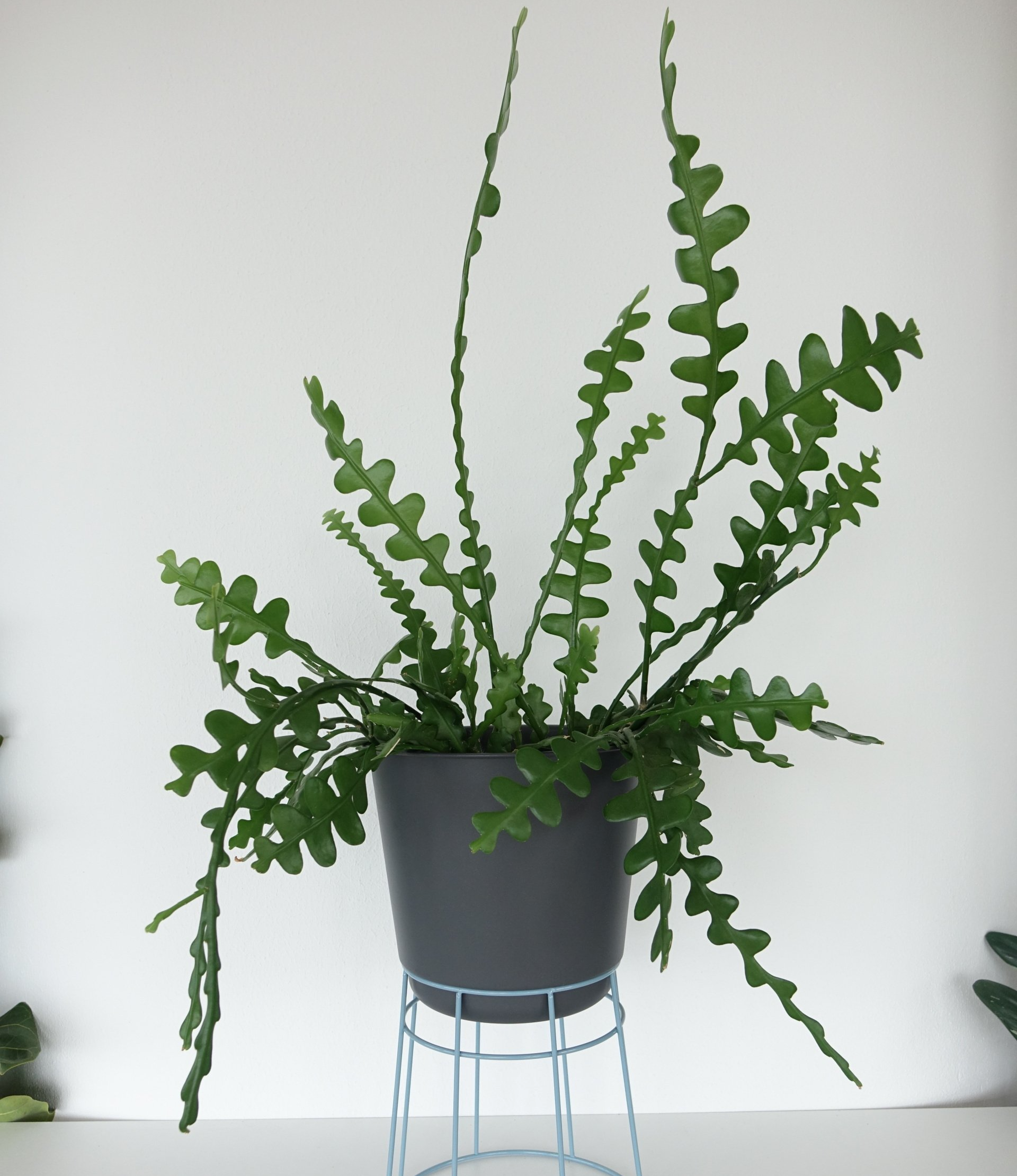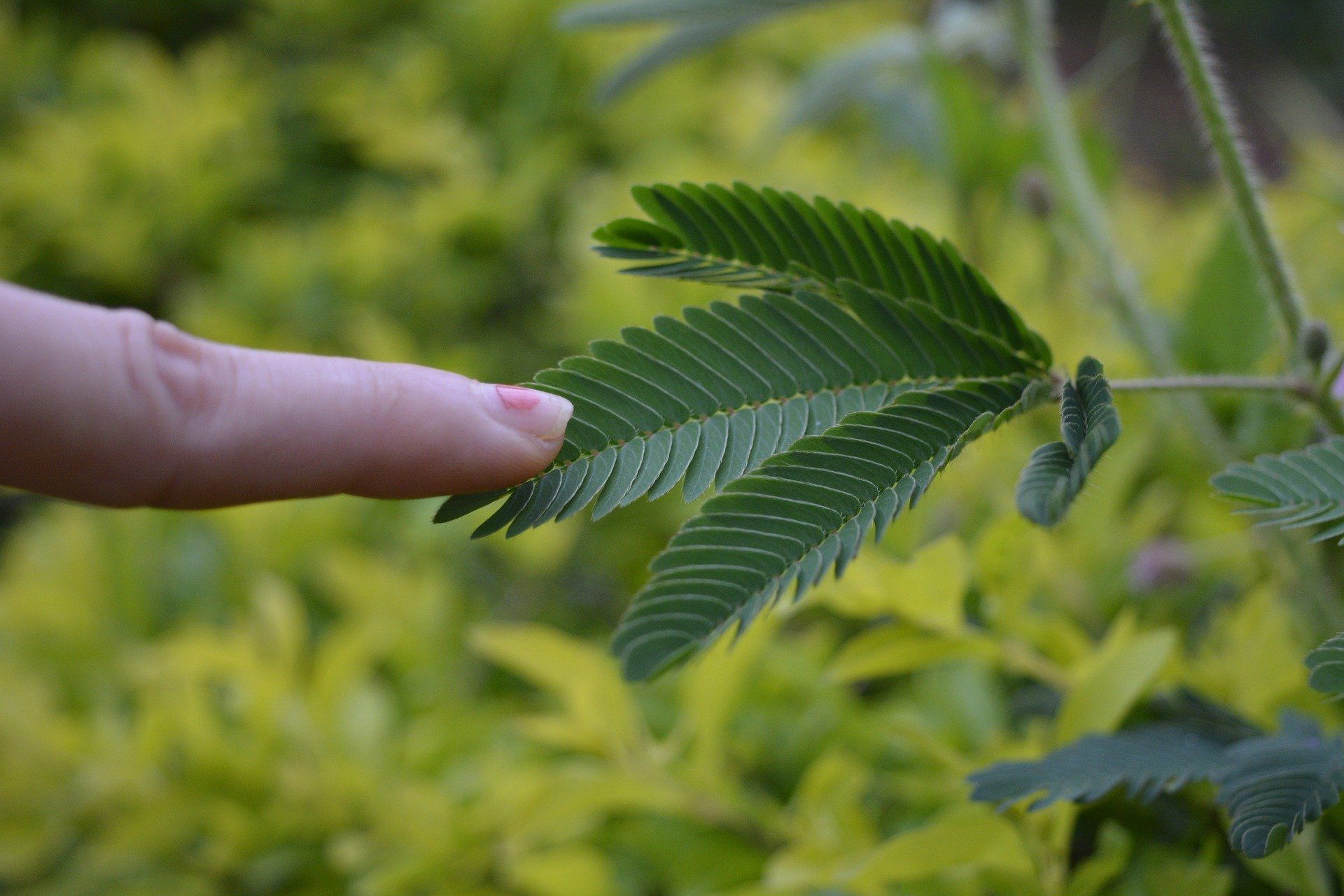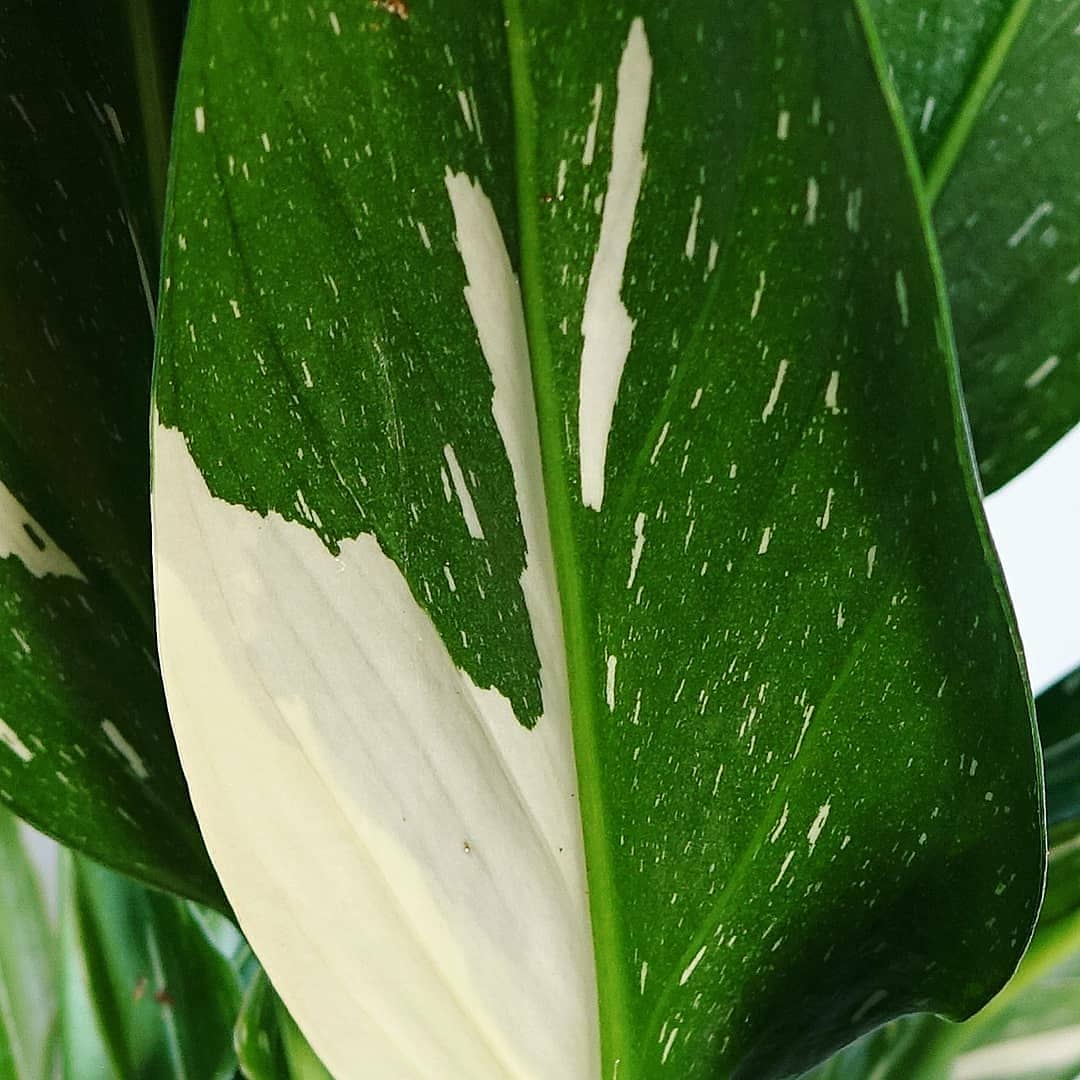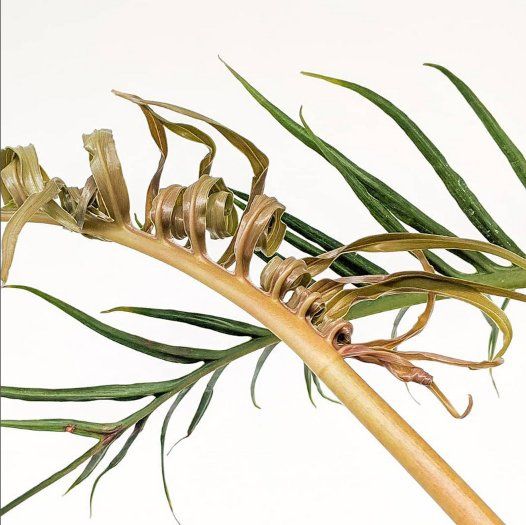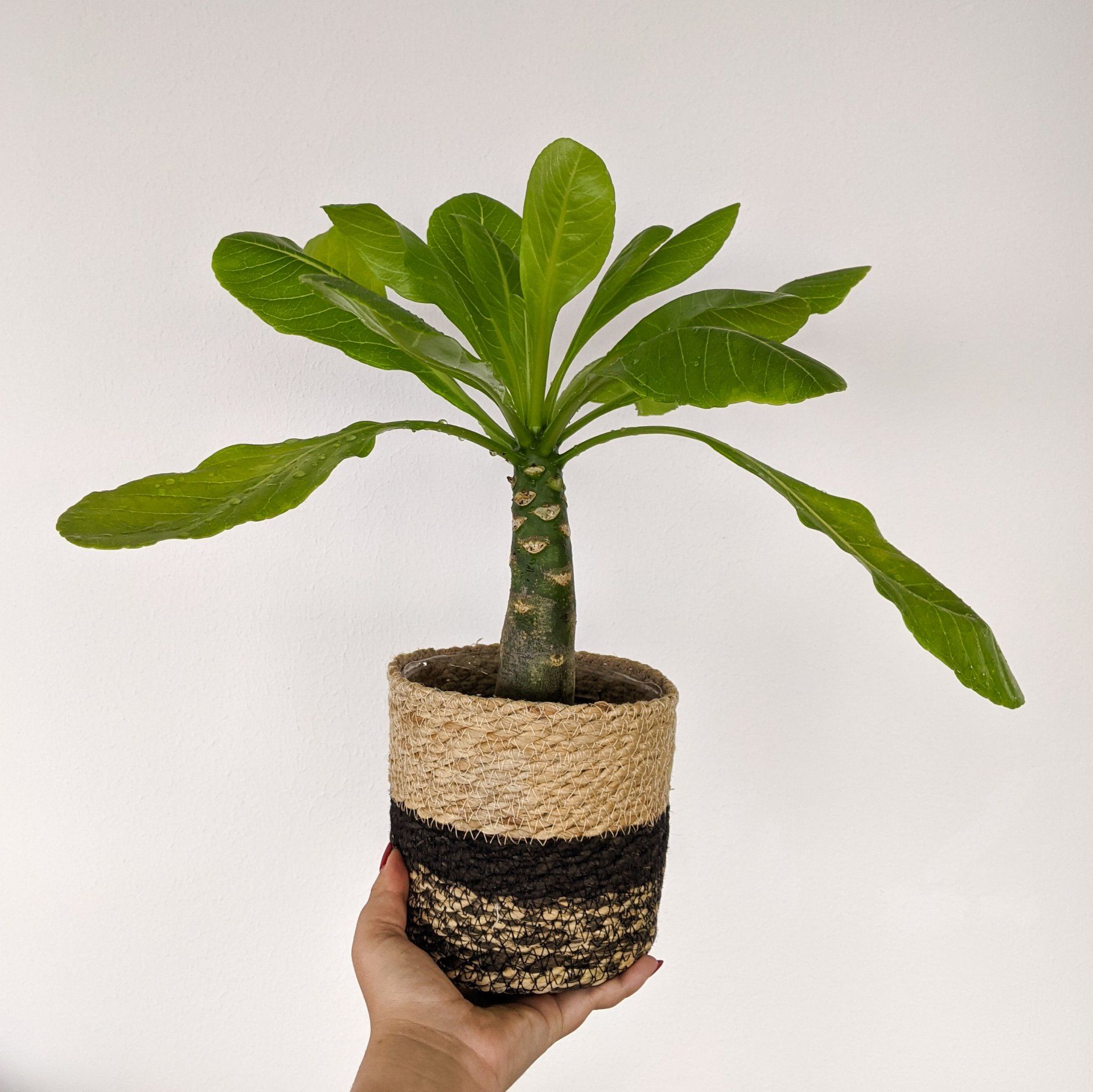M: You probably threw it out last month: the poinsettia! This plant grows wild the in Central and South America, but is mainly used as a houseplant during the Christmas period. This classic belongs to a very versatile genus in the plant world: Euphorbia, also called Spurge.
555-555-5555
mijnmail@mailservice.com
Euphorbia
Euphoria over Euphorbia
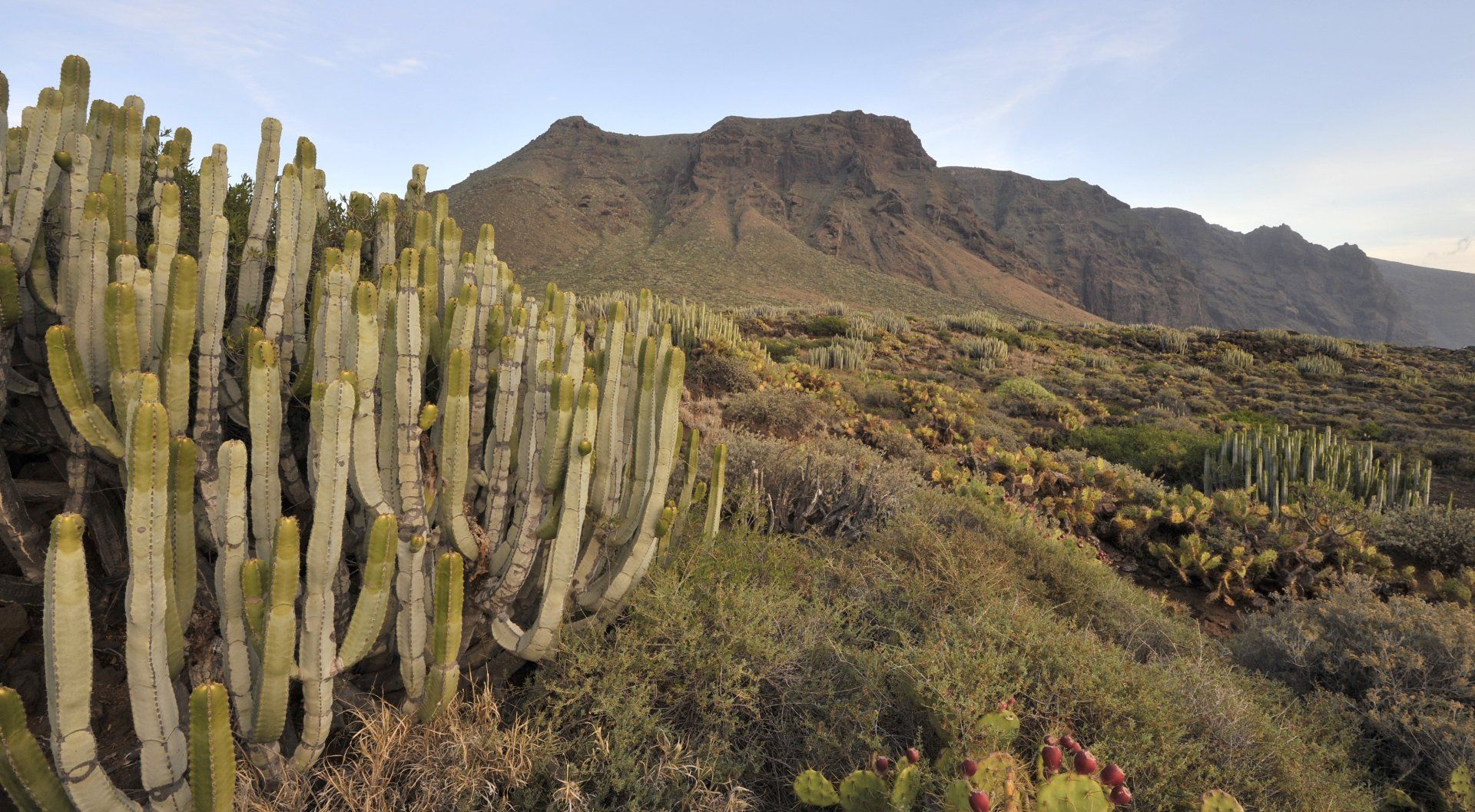
Tenerife landscape with Euphorbia canariensi (Photo: Rogier van Vugt)
Euphorbia is a genus with many diverse species. From native Marsh Spurge to Madeiran trees and bulbous succulents. Our poinsettia also belongs to this genus! The March issue of Gardeners' World magazine featured an article by Rogier van Vugt (greenhouse chef Hortus Botanicus Leiden) and myself about this diverse genus. Download it (Dutch!) or read it below. Below you will find tips for plants and seeds.
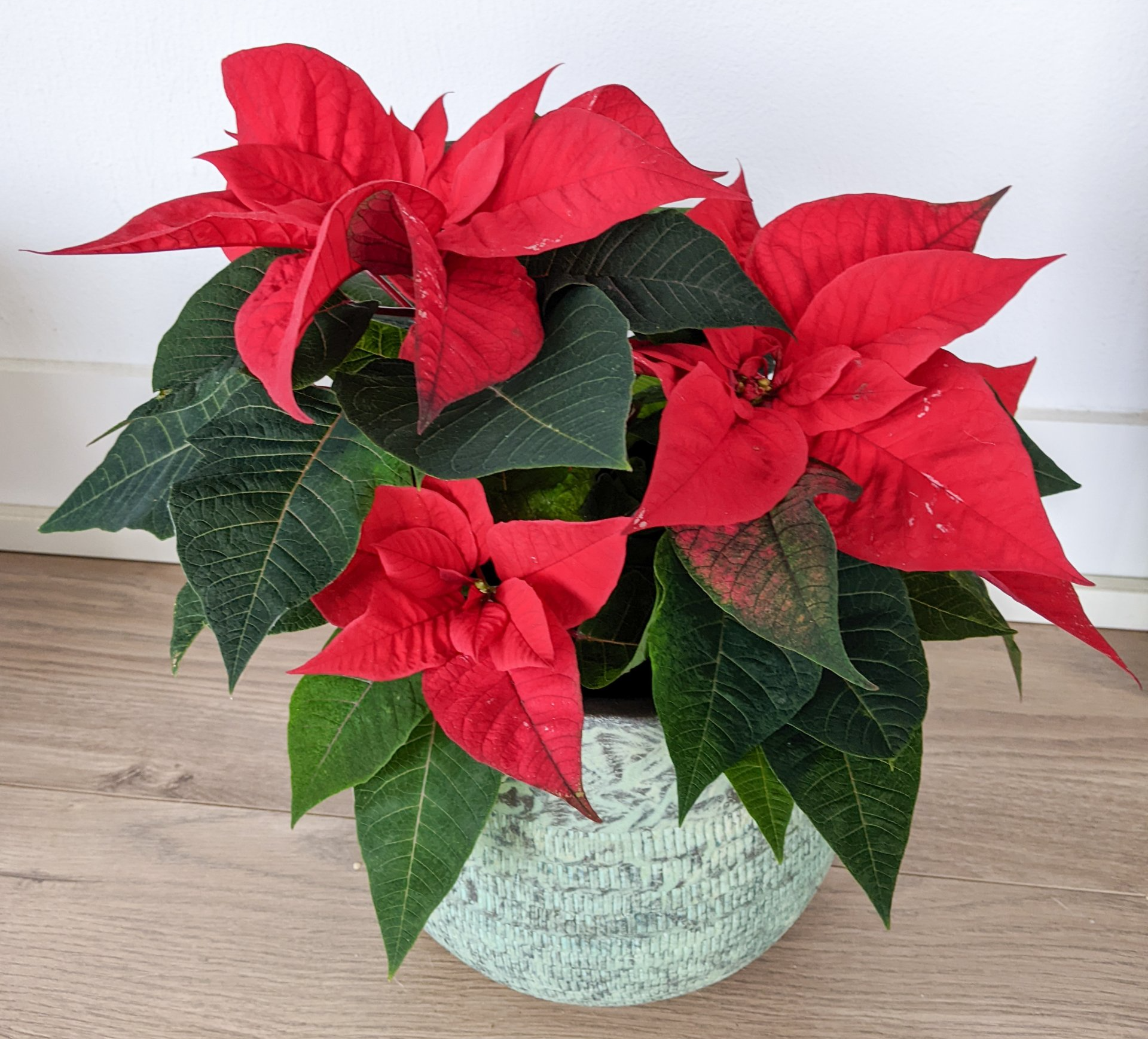
R: You have to imagine this: Euphorbia is a genus. Just like Fuchsia or Dahlia. But in this single genus there are species that develop into succulent annuals such as the native milkweed, shrubs such as the Mediterranean Euphorbia dendroides, the meter-tall tree spurge in Madeira and the super succulent Euphorbia obesa which resembles a small green basketball. There seems to be almost no limit to the adaptability of these plants. You can of course ask yourself. “If they are so different why are they all Euphorbia?” Well, that's simple. Genetic research shows that, and if you look at the flowers and fruits you suddenly see incredible similarities. The flowers are always small and lack petals, even if you think they are large and eye-catching, as with the poinsettia, it is not the flowers that provide the color but modified leaves. The real flowers of the poinsettia are those little green-yellow balls in the middle of those colorful leaves. And those flowers suddenly look surprisingly similar to those of the other species. The fruits are also very recognizable. These have three compartments with a seed in each compartment which, when ripe, is forcefully ejected. There is another good feature that helps you identify spurge, but we'll get to that later.
Left: Flowers from Euphorbia canariensis Right: flowers and young fruit of Euphorbia exigua (Photos: Rogier van Vugt)
It goes without saying that not every spurge species is a suitable houseplant. We put the hardy varieties in the garden. And actually, that twisted poinsettia is a nuisance too. This is the reason you will practically never see anyone re-bloom an old poinsettia year after year. The most typical houseplant Euphorbia are the succulent varieties. And that's what we're going to talk about now.
M: Don't worry, there is still a lot of variety within the succulent Euphorbias. The Crown of thorns is an old classic: a plant with a thorny trunk that regularly blooms with small red or pink flowers. But you've probably seem the aforementioned Euphorbia obesa on a sunny windowsill once. That semi-circular ball in the ground has a completely different growth habit than, for example, Euphorbia platyclada (see below). This bizarre plant is also called the 'dead plant' or 'dead stick plant' and you can understand why! Several friends have already asked me why I still have those 'dry stems' in my living room. Is this too weird for you, but do you like this growth habit? Then take a Pencil plant (Euphorbia tirucalli). Do you like to sow? Then think of the Madagascar Jewel (Euphorbia leuconeura). This Euphorbia flowers regularly and is a self-pollinator. But beware: since Euphorbias shoot their seeds - up to a few meters - you could just get small Madagascar jewels in other flower pots! Another Euphorbia that you have probably already seen, in hip shops or old westerns: Euphorbia ingens. This one is also called 'cowboy cactus' in the Netherlands, but it is certainly not a cactus! However, these and many other Euphorbias are somewhat similar.
Left to right: Euphorbia platyclada, Euphorbia leuconeura (Madagascar Jewel), the rare Euphorbia handiensis in the wild, Euphorbia mellifera becomes a tree (2 latter photos: Rogier van Vugt)
R: Their resemblance to cacti is not coincidental. It is an adaptation to similar circumstances: (temporary) drought and animals that want to eat you (for lack of better food). This is called convergent evolution. Cacti originated in the New World and the Succulent Euphorbia in the Old World, especially in Africa. In the garden center most people do not see the difference. Especially because the characteristic flowers are not present. Yet you can determine on the spot whether it is a Euphorbia or a cactus. You can look at their weaponry. Euphorbia have thorns and cacti have spines. You can see this difference by looking closely at their attachment. In Euphorbia the thorns are really visibly fused with the stem. Cactus spines, on the other hand, are usually in a bed of downy hairs and, if theyy are not too fat, are easier to move. The most decisive proof, however, is found when you put a hole in the stem. With a cactus a transparent juice comes out and with a Euphorbia white latex. The so-called spurge. This latex can cause skin irritation in some cases and is dangerous if you get it in your eye. So be careful with these plants.
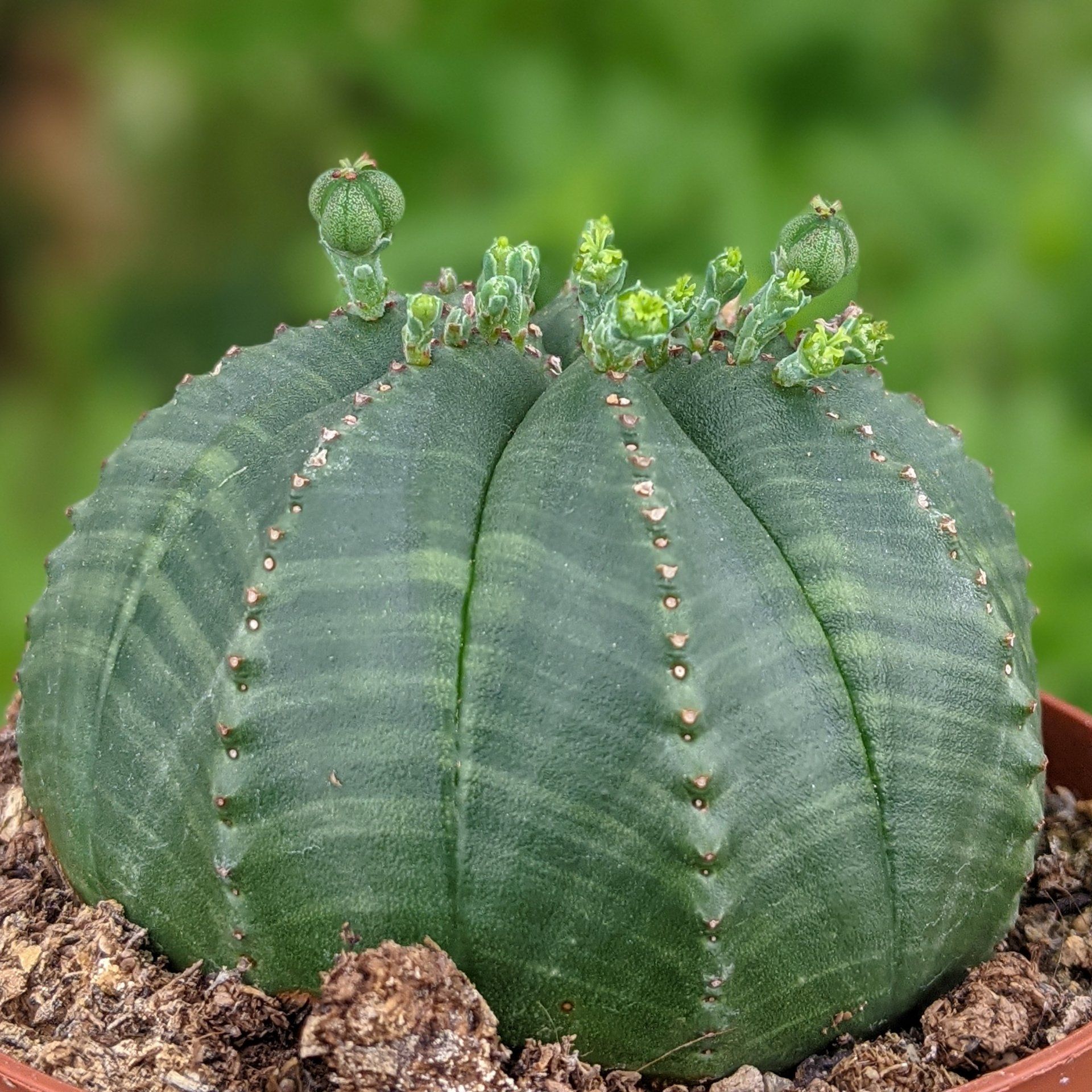
Titel dia
Euphorbia obesa with withered flowers and a single seed pod.
Knop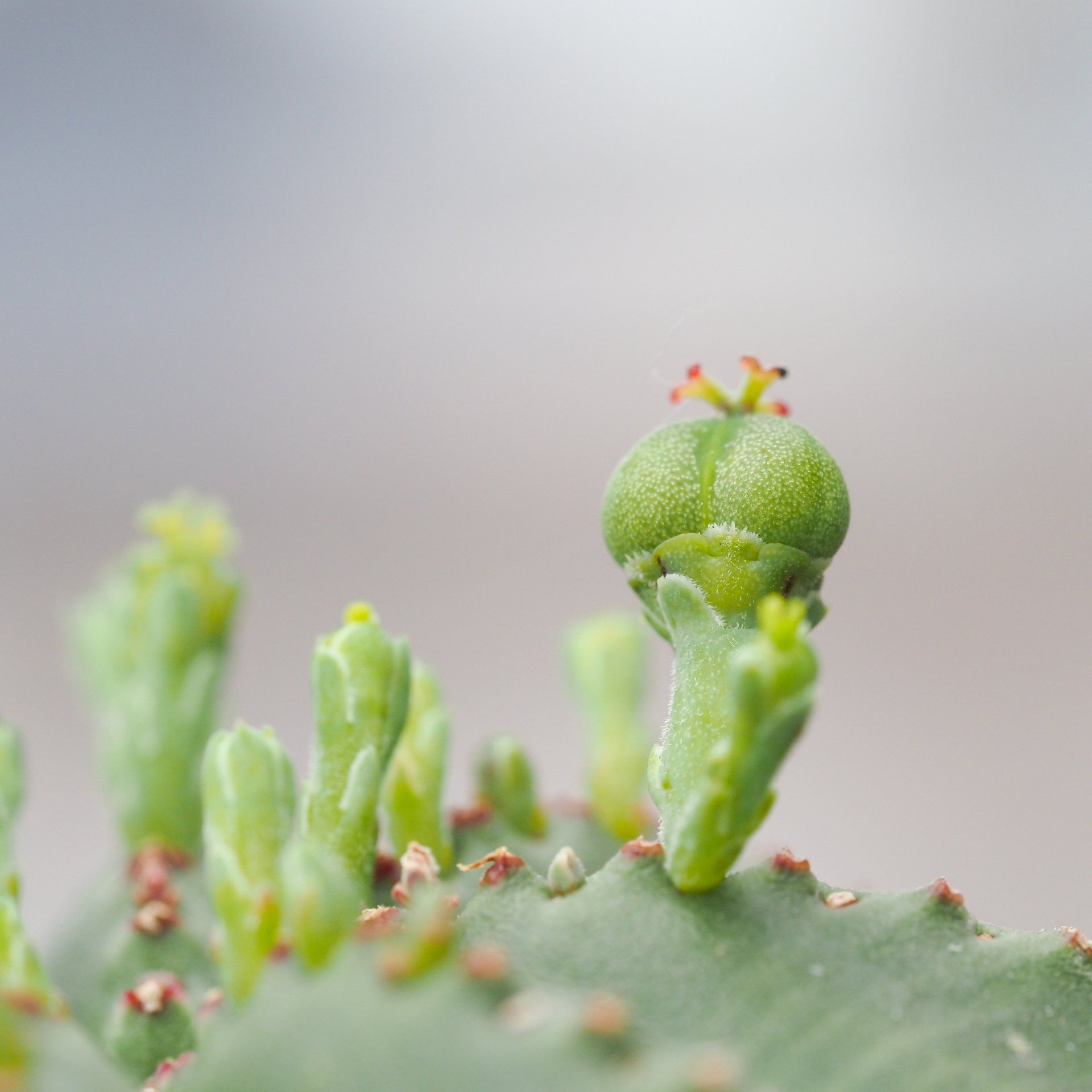
Titel dia
Seed pod. The flower has already fallen off.
Knop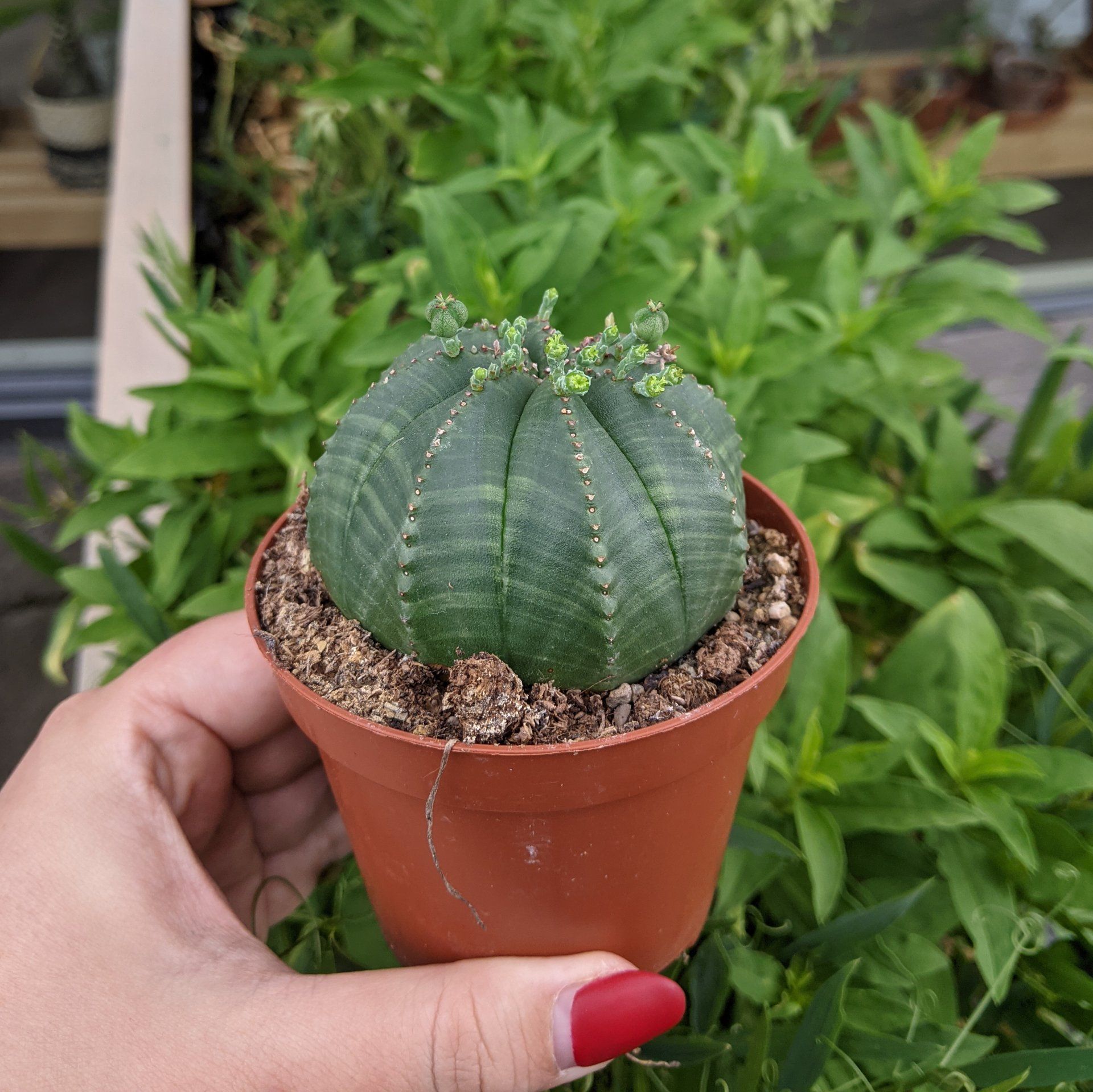
Titel dia
A half-burried green basketball.
Knop
Euphorbia obesa
M: The care of these succulent Euphorbias is similar to other succulents: think of well-draining soil and not too much water. A light location is also important. But beware: some Euphorbia can withstand direct sunlight better than others. Look at the thickness of the leaves: Madagascar Jewel has fairly thin leaves and will turn red/orange if left in direct sunlight for too long (such as a south-facing windowsill). The much thicker Euphorbia obesa, Euphorbia platyclada and the pencil plant can handle it better. Still, I advise you to protect the sun worshipers on your windowsill (including the cacti and other succulents) in high summer from the most powerful sun rays.
R. The mini mistletoe is also a lover of Euphorbia. We all know the mistletoe (Viscum album) that you can buy around Christmas. This is just one of the many species of mistletoe. The smallest species of mistletoe (Viscum minimum) comes from South Africa and lives exclusively as a parasite IN the thick stems of a number of Euphorbia species. The plant lives internally as a network of threads, but before the flowering time it breaks through the skin of the Euphorbia and then produces small inconspicuous flowers. When these are pollinated, they turn into bright red berries that are very noticeable. These berries actually increase the ornamental value of the Euphorbia and it would be quite nice to see these in garden centers. But until then, the mini mistletoe can only be admired in a few botanical gardens, such as in Leiden, where various Euphorbia plants house this little wonder.
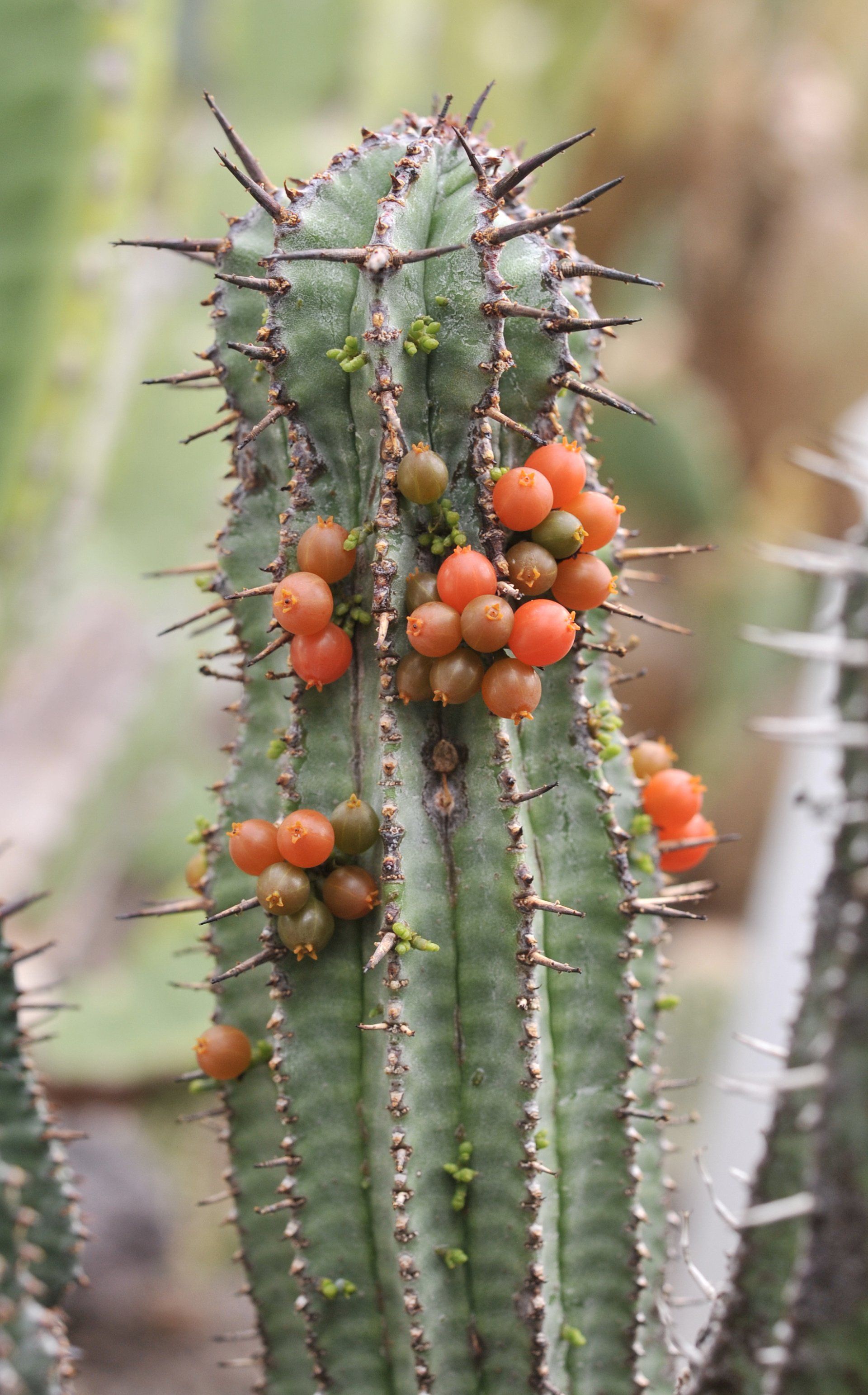
Euphorbia horrida with berries from the mini mistletoe (Photo: Rogier van Vugt)
Buy Euphorbia houseplants
Buy Euphorbia seeds
Questions or remarks? Let me know!
